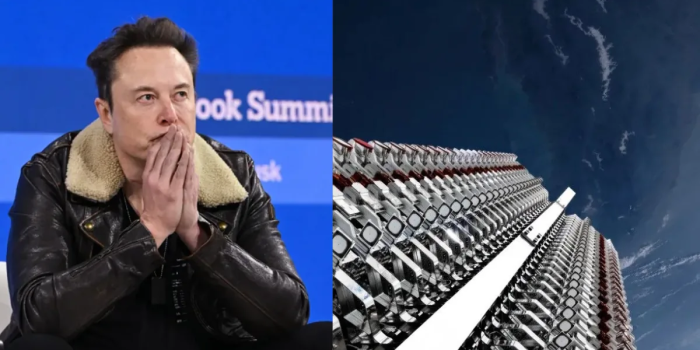A former NASA scientist sounds alarmed about the potential catastrophic consequences of mega satellite constellations on Earth’s magnetosphere. Dr. Sierra Solter-Hunt’s recent study sheds light on the detrimental effects of accumulating space debris from Starlink satellites launched by SpaceX on our planet’s magnetic shield against cosmic radiation.
Earth’s magnetosphere, crucial for safeguarding life from harmful cosmic rays, faces a new threat as mega satellite constellations increase in orbit. With over 1.3 tons of debris accumulating every hour, the Earth’s magnetic field risks distortion or entrapment by metal particles nearing the end of their lifecycle.

“I was very surprised. No one has given much research to the accumulation of metal dust from the space industry,” Dr. Solter-Hunt expressed to Daily Mail, emphasizing the lack of attention this critical issue has received.
The accumulation of highly conductive metal debris poses the threat of ‘atmospheric stripping,’ a phenomenon akin to that occurring on celestial bodies like Mars and Mercury, where the absence of a robust magnetic field leaves their atmospheres vulnerable to cosmic radiation.

SpaceX’s Starlink program, currently boasting over 5,500 satellites in orbit, presents a looming threat as plans to launch thousands more are underway. Dr. Solter-Hunt warns that the collective number of satellites, projected to reach 100,000 within a decade, could have irreversible consequences for Earth’s magnetosphere. “By the time we get to 100,000, I think it could be too late,” she cautioned, urging immediate action to mitigate the impending crisis.

Dr Solter-Hunt’s concerns echo those of other experts, as evidenced by a recent study published in Astronomy and Astrophysics, which highlighted the disruptive impact of Starlink satellites on space exploration endeavours.
As the number of satellites continues to soar, the need for strategies to address the environmental and safety implications becomes increasingly urgent.


